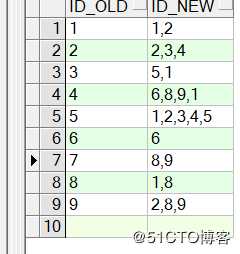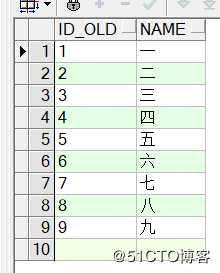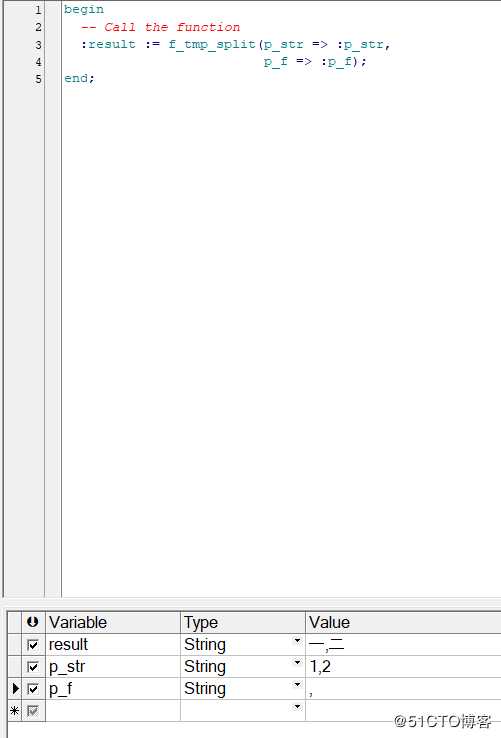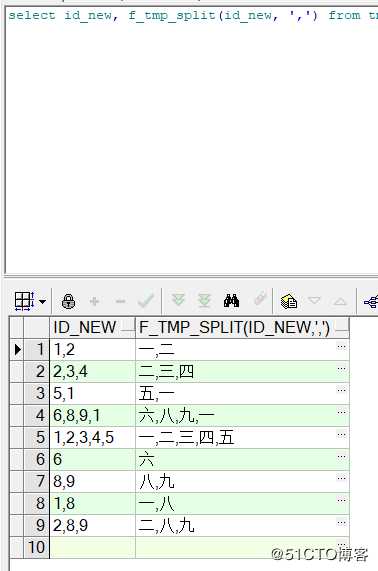标签:需要 需求 图片 类型 class cep 技术 concat varchar
需求描述:两张表,如下,需要查询tmp1表中id_new在tmp2中的name

方法二:创建自定义函数来实现
create or replace function f_tmp_split(p_str varchar2, p_f varchar2)
return varchar2 is
v_pos pls_integer := 0; --获取当前分隔符位置
v_pre_pos pls_integer := 1; --从第几位开始截取
v_len pls_integer := 0; --字符串长度
v_len1 pls_integer := 0; --分隔符长度
v_result dbms_sql.Varchar2_Table; --结果集
v_num pls_integer := 1; --元素数量
v_name_class varchar2(1000); --返回的集合
v_name_tmp varchar2(1000); --返回拼接的值
begin
v_len := length(p_str);
v_len1 := length(p_f);
while v_pos < v_len loop
v_pos := instr(p_str, p_f, v_pre_pos);
if v_pos = 0 then
v_pre_pos := v_len;
v_result(v_num) := substr(p_str, v_pre_pos);
begin
select a.name
into v_name_tmp
from tmp2 a
where a.id_old = v_result(v_num);
exception
when no_data_found then
v_name_tmp := ‘‘;
end;
v_name_class := v_name_class || v_name_tmp;
if v_pre_pos >= v_len then
exit;
end if;
else
v_result(v_num) := substr(p_str, v_pre_pos, v_pos - v_pre_pos);
begin
select a.name || p_f
into v_name_tmp
from tmp2 a
where a.id_old = v_result(v_num);
exception
when no_data_found then
v_name_tmp := ‘‘;
end;
v_name_class := v_name_class || v_name_tmp;
v_pre_pos := v_pos + v_len1;
end if;
end loop;
return v_name_class;
end;
效果如下:

标签:需要 需求 图片 类型 class cep 技术 concat varchar
原文地址:https://blog.51cto.com/12777507/2433789